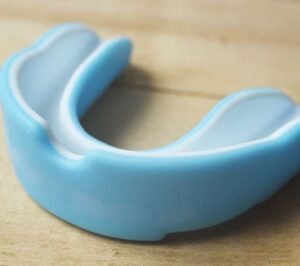Dental bonding is a reversible dental procedure that involves using a composite resin material to rebuild and restore teeth. The composites used can be matched with the color of the patient’s teeth, allowing restorations made with them to blend in.
Dental bonding has cosmetic and restorative uses in dentistry. Unlike other popular restorations dentists use, its application does not require making permanent alterations to the teeth being treated, making the procedure fully reversible.
Reasons a general dentist might recommend dental bonding
Some of the reasons why a general dentist might recommend dental bonding for some of their patients include:
1. To fix minor chips and breaks
Severe breaks that impact a tooth’s pulp chamber often require procedures like root canals and crowns to restore them, but minor breaks can be fixed with composite resin. The procedure often involves a general dentist applying several layers of composite on the tooth being treated, covering up any breaks or chips.
2. To cover up stains and discoloration
Teeth whitening treatments are typically the first option explored when it comes to improving the aesthetics of teeth, but some stains caused by issues like tetracycline antibiotics and tooth decay do not respond to these treatments.
Restorations like composite bonding, veneers, and crowns are typically explored when this occurs. Composite bonding is the most economical option, and it can restore the aesthetics of discolored teeth for up to ten years.
3. To fill gaps between teeth
Composite bonding can also be used to close up unnatural gaps between teeth. Treatments usually involve using composite layers to widen the two teeth closest to the gap, closing the space between them.
4. To rebuild the shape of teeth
Composite bonding can be used to improve the shape of deformed teeth. Layers of composite are applied to the patient’s teeth and reshaped to get the desired aesthetics. The composite resin is then hardened with a curing light.
5. To treat cavities
Composite bonding is becoming the standard way to fill up cavities as a growing number of patients choose to avoid silver amalgam fillings because of their mercury content and poor aesthetics. Mercury is now known to be toxic, making composite fillings the healthier alternative.
Restoring a tooth with composite bonding requires the removal of less tooth material, so it is also less invasive than getting traditional amalgam fillings. Composite restorations also lead to better aesthetics since they can be color-matched with the patient’s teeth, while traditional fillings have a dark grey color that makes them easy to spot.
6. To protect exposed teeth roots
Gum disease is one of the leading dental problems, and it leads to symptoms like receding gums. This leaves teeth roots exposed to the acids made by microorganisms in the mouth. Unlike the visible part of teeth, called the crown, teeth roots do not have an outer layer of enamel to protect them against acids, making them considerably more vulnerable to tooth decay.
What to expect when getting composite bonding
Dental bonding often starts with a general dentist sitting down with a patient to discuss their cosmetic goals. Diagnostic tests like X-rays might be requested to ensure composite bonding is the optimal way to address the patient’s concerns. Existing issues, like tooth decay, are addressed before proceeding with the bonding.
Here are the different steps that occur during the procedure:
Restoring teeth with composite resins is not a painful experience, and anesthetics are typically not required. The exception would be if the general dentist needs to remove decayed tooth material before restoring the tooth with composites.
Teeth restored with composites do not require any special care. Brushing with a soft toothbrush twice a day and flossing daily is all the care teeth that are restored with composite need. Bonding restorations can last up to ten years with good oral hygiene.
You can transform your smile during a single visit
Give us a call or stop by our Tamarac clinic to set up an appointment with our general dentist if you are dealing with issues like tooth decay, discolored teeth, or chipped teeth.
Request an appointment here: http://www.thedentalplaceoftamarac.com or call The Dental Place of Tamarac at (954) 271-8072 for an appointment in our Tamarac office.
Check out what others are saying about our dental services on Yelp: Dental Bonding in Tamarac, FL.
Related Posts
Dental bonding is one of the most versatile and minimally invasive restorative and cosmetic dental procedures. Dental bonding is the go-to procedure for many patients looking to fix imperfections or enhance their smile, from enhancing the appearance and shape of teeth to repairing damaged enamel. Whether you are new to cosmetic dentistry or considering touch-ups…
A dental bonding procedure is a treatment that involves applying tooth-colored resin and using a special light to harden it. It is primarily a cosmetic procedure but may also be used to treat some dental conditions.Many dentists use dental bonding for small cosmetic alterations, short-term corrections of cosmetic issues, and repairing teeth in areas with…
Dental bonding is a common dental service that many dentists offer right in their offices. What exactly does dental bonding involve? Bonding, also known as tooth veneers, involves applying a special resin to the front of your teeth to make them look whiter and brighter. Your dentist will take an impression of your teeth during…
Dental bonding has a variety of uses in cosmetic dentistry, and it is one of the more affordable ways to improve the appearance of a person’s teeth. These treatments involve applying a putty-like composite directly to teeth being restored. These composites are color-matched with the person’s real teeth so repairs made blend in.Also known as…
We are committed to providing quality healthcare to families located in the Tamarac area and treat patients of all ages.
The Dental Place of Tamarac
7300 W McNab Rd Ste 115
Tamarac, FL 33321
Phone: (954) 271-8072
Book Your Appointment Today!





